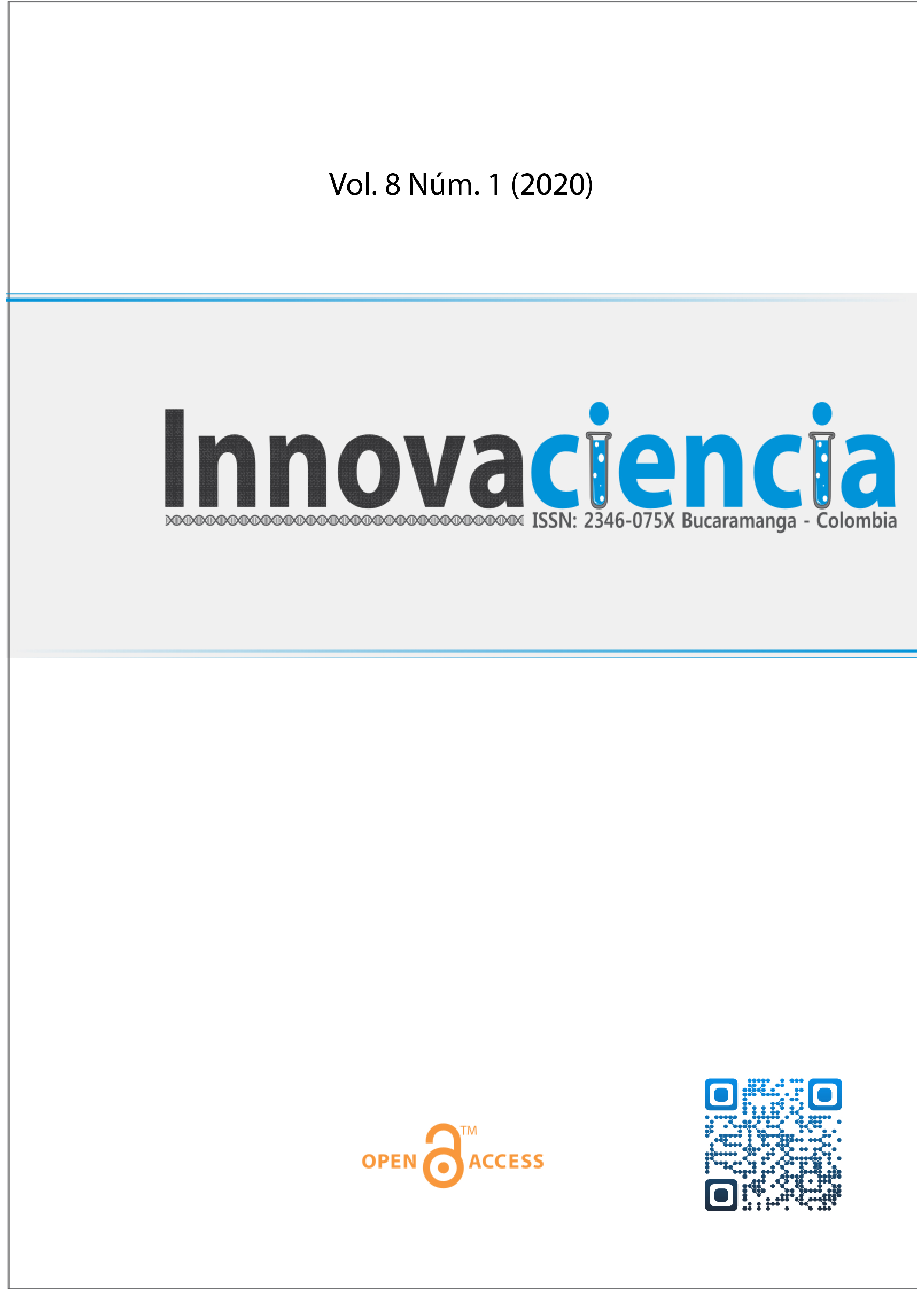Predicción de rotación de clientes en la industria de las telecomunicaciones utilizando métodos de minería de datos
DOI:
https://doi.org/10.15649/2346075X.999Palabras clave:
Customer Churn, Neural Network, Genetic Algorithm, Data MiningResumen
At present, in competitive space between companies and organizations, customers churn is their most important challenge. When a customer becomes churn, organizations lose one of their most important assets, which can lead to financial losses and even bankruptcy. Customer churn prediction using data mining techniques can alleviate these problems to some extent. The aim of the present study is to provide a hybrid method based on Genetic Algorithm and Modular Neural Network to customer churn prediction in telecommunication industries and use Irancell data as a sample. The accuracy result of this study which is 95.5% get the highest accuracy rank in comparisons with the result of other methods, which shows using modular neural network with two modules of feedforward neural network and also using genetic algorithm to obtain optimal structure for modules of the neural network are the most important indicators of this method to each the highest accuracy result among the rest of methods.
Referencias
Saadollahi Asmari, N. (2015). Comparison of Data Mining of PSIRC Methodology and RMEES Methodology, Second International Conference on Research in Science and Technology, pp. 3-13.
Ghasemi, S. Omidvarian M. (2015). Identification and Classification of Influential Variables in Predicting Customer Churn in Telecommunication Industry, International Conference on Modern Research in Industrial Management and Engineering, pp. 20-30.
Hung, S., Yen, D., Wang, H. (2006). Applying data mining to telecom churn management, Expert Systems with Applications 31, p 515-524.
https://doi.org/10.1016/j.eswa.2005.09.080
Vafeiadis, T., Diamantaras, K. I., Sarigiannidis, G., Chatzisavvas, K. C. (2015). A comparison of machine learning techniques for customer churn prediction, Simul. Model. Pract. Theory, vol. 55, pp. 1-9.
https://doi.org/10.1016/j.simpat.2015.03.003
Caigny, A. D., Coussement, K., Bock, K. (2018). A new hybrid classification algorithm for customer churn prediction based on logistic regression and decision trees, European Journal of Operational Research, Volume 269, Issue 2, p 760-772.
https://doi.org/10.1016/j.ejor.2018.02.009
Jadhav, R., Usharani T. (2011). Churn prediction in telecommunication using data mining technology, International Journal of Advanced Computer Science and Applications (IJACSA), Volume 2.
https://doi.org/10.14569/IJACSA.2011.020204
Coussementa, k., Lessmann, S., Verstraeten, B. (2017). A comparative analysis of data preparation algorithms for customer churn prediction: A case study in the telecommunication industry, Decision Support Systems, Volume 95, p 27-36, 2017.
https://doi.org/10.1016/j.dss.2016.11.007
Sahin, Y., Bulkan, S., Duman, E. (2013). A cost-sensitive decision tree approach for fraud detection, Expert Systems with Applications, Volume 40, Issue 15, p 5916-5923.
https://doi.org/10.1016/j.eswa.2013.05.021
Qureshi, S., Rehman, A., Qamar, A., Kamal, A., Rehman, A. (2013). Telecommunication subscribers' churn prediction model using machine learning", In Eighth International Conference on Digital Information Management (ICDIM 2013), pp. 131-136.
https://doi.org/10.1109/ICDIM.2013.6693977
Salchenberger, L. M., Cinar, M., Lash, N. A. (2007). Neural networks: A new tool for predicting thrift failures, Decision Sciences, Vol. 23, p. 899-916.
https://doi.org/10.1111/j.1540-5915.1992.tb00425.x
Zakaryazad, A., Duman, E. (2016). A profit-driven Artificial Neural Network (ANN) with applications to fraud detection and direct marketing, Neurocomputing, Volume 175, Part A, p 121-131.
https://doi.org/10.1016/j.neucom.2015.10.042
Zhang, X. (2015). Time series analysis and prediction by neural networks, Optimization Methods and Software, Vol. 4, pp. 151-170.
https://doi.org/10.1080/10556789408805584
Chester, D. L. (1990). Why two hidden layers are better than one?, Proceedings of the International Joint Conference on Neural Networks, Vol. 1, pp. 1265-1268, San Diego, CA, USA.
Sharma, A., Kumar, P. (2011). A Neural Network based Approach for Predicting Customer Churn in Cellular Network Services, Int. J. Comput. Appl., vol. 27, no. 11, pp. 26-31.
https://doi.org/10.5120/3344-4605
Shaaban, E., Helmy, Y., Khedr, A., Nasr, M. (2012). A Proposed Churn Prediction Model, Int. J. Eng. Res. Appl., vol. 2, no. 4, pp. 693-697.
Brandusoiu, I., Toderean, G. (2013). Churn Prediction in the Telecommunications Sector using Support Vector Machines, Ann. ORADEA Univ. Fascicle Manag. Technol. Eng., no. 1.
https://doi.org/10.15660/AUOFMTE.2013-1.2772
Hagan, M. T., & Menhaj, M. B. (1994). Training feedforward networks with the Marquardt algorithm, IEEE transactions on Neural Networks, 5(6), 989-993.
https://doi.org/10.1109/72.329697
Melin, P. (2012). Modular Neural Networks and Type-2 Fuzzy Systems for Pattern Recognition, Springer-Verlag Berlin Heidelberg.
https://doi.org/10.1007/978-3-642-24139-0
Piri, S., Delen, D., & Liu, T. (2018). A synthetic informative minority over-sampling (SIMO) algorithm leveraging support vector machine to enhance learning from imbalanced datasets, Decision Support Systems, 106, p 15-29.
https://doi.org/10.1016/j.dss.2017.11.006
Descargas
Publicado
Cómo citar
Descargas
Número
Sección
Licencia
Todos los artículos publicados en esta revista científica están protegidos por los derechos de autor. Los autores retienen los derechos de autor y conceden a la revista el derecho de primera publicación con el trabajo simultáneamente licenciado bajo una Licencia Creative Commons Atribución-NoComercial 4.0 Internacional (CC BY-NC 4.0) que permite compartir el trabajo con reconocimiento de autoría y sin fines comerciales.
Los lectores pueden copiar y distribuir el material de este número de la revista para fines no comerciales en cualquier medio, siempre que se cite el trabajo original y se den crédito a los autores y a la revista.
Cualquier uso comercial del material de esta revista está estrictamente prohibido sin el permiso por escrito del titular de los derechos de autor.
Para obtener más información sobre los derechos de autor de la revista y las políticas de acceso abierto, por favor visite nuestro sitio web.
















